There’s a stretch of road above Ixtapa where the view opens suddenly, and for a moment, the Pacific seems endless. Blue on blue. It’s there, carved into the cliffs, that Cala de Mar Resort & Spa sits—half hidden by palms, half suspended over the ocean.
You don’t notice how far above the water you are until you hear it—that deep, steady sound of waves hitting rock far below. Then you understand why people keep calling this place one of Mexico’s last truly peaceful escapes.

A Place That Feels Removed
There are 59 suites. Each one faces the ocean, each one with a private terrace and plunge pool that looks like it spills into the horizon. The sound never stops—it’s part of the rhythm here.
Everything is built into the cliff: soft stucco walls, curved lines, no angles to distract the eye. Even the funicular that moves guests up and down the hillside seems to glide in slow motion. It’s impossible not to match that pace after a while.
Inside, it’s all stone, linen, and the smell of salt. When night falls, lights flicker across the balconies and the sea disappears into black. You hear only the water.
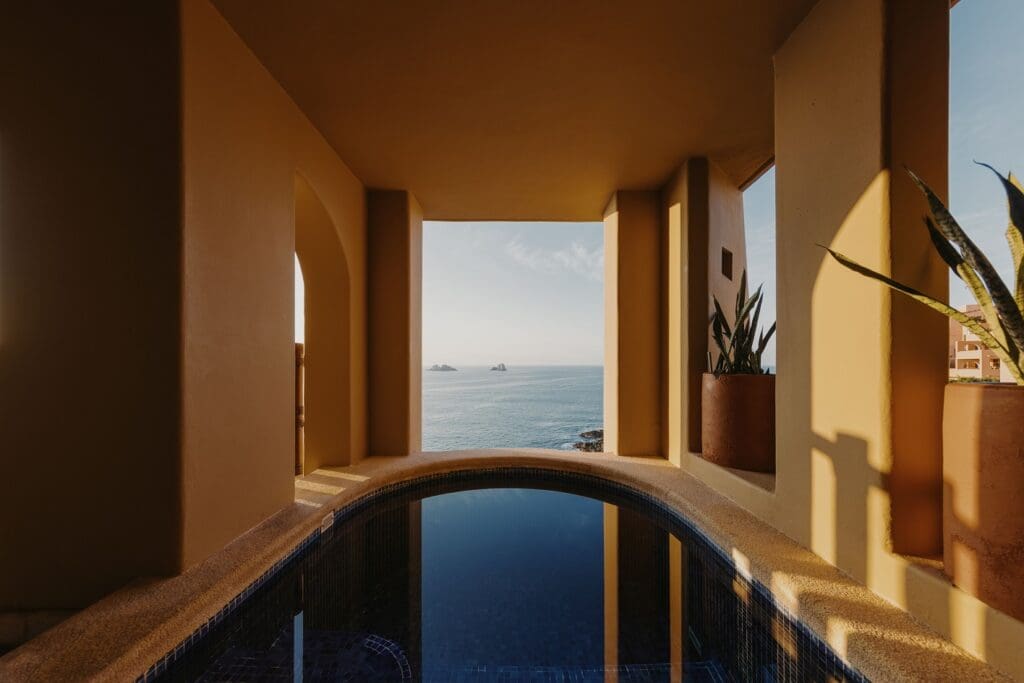
The Two Towns Nearby
Ixtapa and Zihuatanejo sit side by side, sharing a coastline but not a personality.
Ixtapa is polished—marinas, tidy streets, golf courses cut from the jungle. Zihuatanejo is different. Smaller, older, alive in a slower way. Fishermen still drag their nets across Playa Principal at dawn. Markets hum by midmorning. Somewhere, a grill smokes with the scent of fish and lime.
Drive a little farther and the coast opens again. Barra de Potosí, all mangroves and bird calls. Troncones, a sleepy surf town where time forgets to move. Out here, the air changes. Ironically, it feels like the Mexico that existed before resort towns learned to shout.
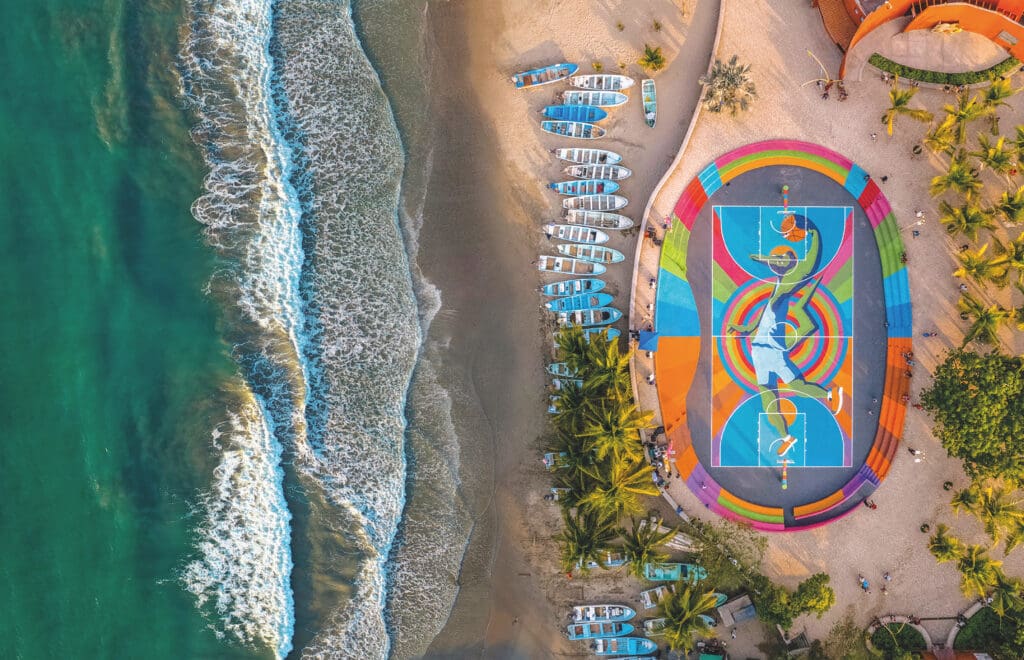
Food That Follows the Ocean
At Las Rocas, breakfast is more ceremony than meal—the first sip of coffee, the hum of the waves, pastries still warm from the oven. Mornings stretch out lazily.
Dinner at A Mares turns quieter. The menu leans into coastal Guerrero: bright ceviche, grilled fish brushed with herbs, risottos that taste faintly of the sea. Everything feels simple but intentional.
Some nights, they’ll set a table on your terrace. Candles, the sound of surf below, a sky full of stars—you don’t need much else. No matter where you go in Mexico, you know food is always a focal point of the experience.
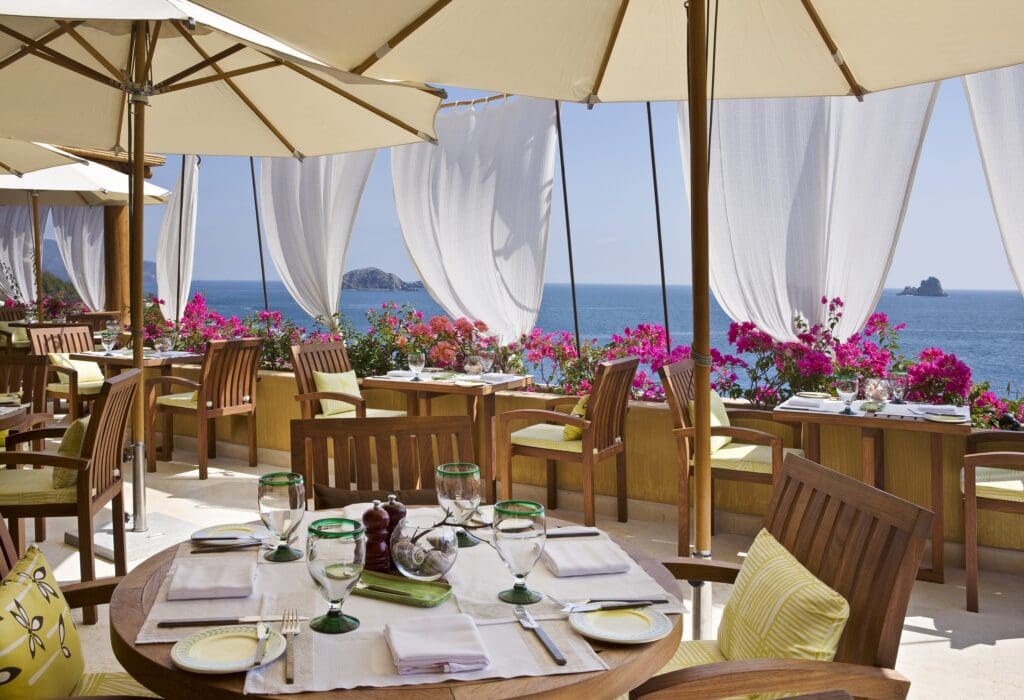
The Slow Art of Stillness
Down one level, the El Capricho Spa smells faintly of citrus and wood. It’s quiet in a way that makes you aware of your own breathing. Treatments use local ingredients—sea salt, volcanic stone, herbs pulled from the hills.
There’s a Temazcal, too—a traditional clay steam bath that’s been used here for generations. Guests go in tense and leave silent, faces soft, as if they’ve put something heavy down.
In the mornings, yoga takes place on a deck that faces nothing but ocean. The instructor speaks low, the water moves in slow rhythm below. Even the breeze feels deliberate.
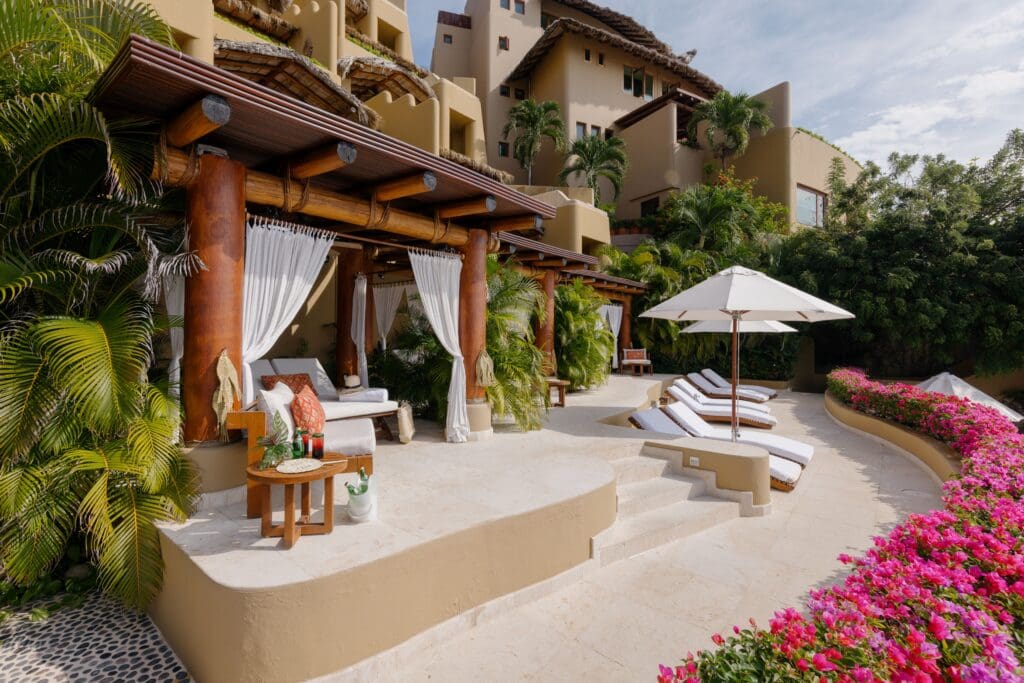
Built to Blend In
Cala de Mar doesn’t compete with the view. It belongs to it. The colors match the earth—soft beige, pale wood, nothing too bright. The design is deliberate: walls that hold heat in the day and release it at night, open air that keeps the breeze moving.
Each suite feels personal. The pool, the chairs, the small bowl of fruit waiting when you arrive—nothing flashy, everything considered.
Every guest here has a Personal Assistant, but don’t picture formality. Think of someone who simply remembers. They know your name, your favorite drink, the day you said you wanted to go snorkeling but changed your mind because the sky looked too perfect to leave.
It’s service that feels human, not rehearsed.

When the Coast Is Kindest
Locals say the coast shines its brightest between November and March. The air stays dry, the skies clear, the ocean warm enough for swimming from sunrise to dusk. It’s warm but not oppressive—85 degrees on average, and the evenings still carry a breeze.

Leaving the Cliff (If You Must)
It’s easy to stay put, but there’s plenty beyond the resort.
You can take a boat to Playa Las Gatas, snorkel where the reef begins, or head inland for hiking and horseback riding through the jungle. Between December and March, humpback whales pass offshore—sometimes so close you can see their tails break the surface.
Back in Zihuatanejo, the small Museo Arqueológico de la Costa Grande tells stories of the coast’s first settlers—quiet reminders that this land has always pulled people toward it.

Getting to Cala de Mar Resort & Spa
Ixtapa-Zihuatanejo International Airport (ZIH) sits about twenty minutes away. Flights come in direct from Los Angeles, Houston, Dallas, Vancouver, and several Mexican cities. Cala de Mar arranges private transfers — a quiet drive through winding roads until the sea appears and the world falls away.
However you arrive, you leave slower than you came. And that’s the point.
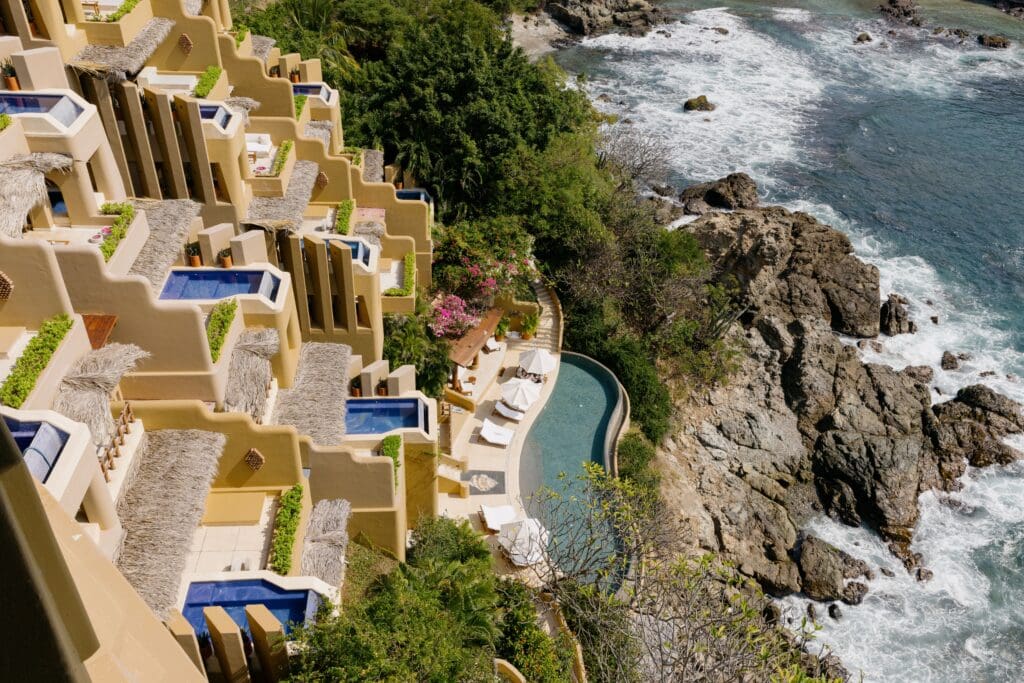
The New Jersey Digest is a new jersey magazine that has chronicled daily life in the Garden State for over 10 years.
- Staffhttps://thedigestonline.com/author/thedigeststaff/
- Staffhttps://thedigestonline.com/author/thedigeststaff/
- Staffhttps://thedigestonline.com/author/thedigeststaff/
- Staffhttps://thedigestonline.com/author/thedigeststaff/


